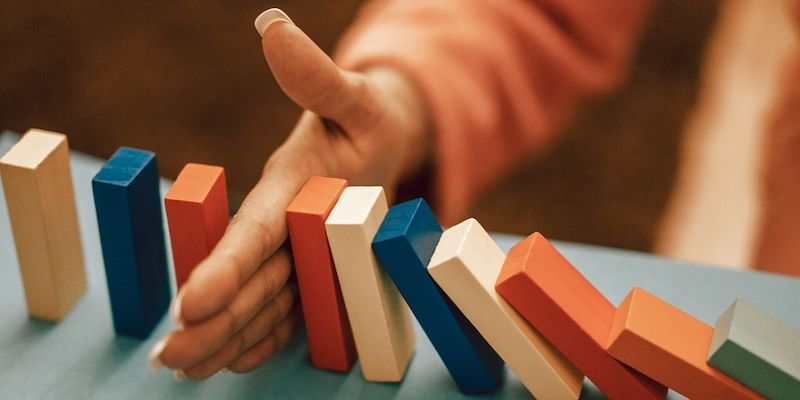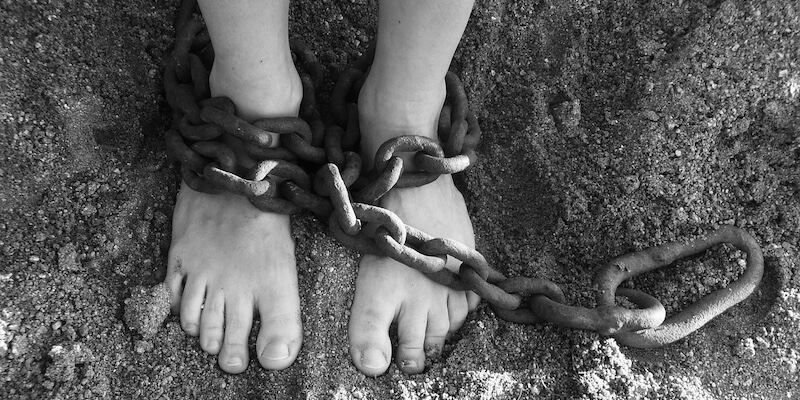Social Comparison Theory & 12 Real-Life Examples
 Social comparison is a normal behavior strategy where we seek to better understand our status relating to ability, opinion, emotional reaction, and more, by comparing ourselves to other people.
Social comparison is a normal behavior strategy where we seek to better understand our status relating to ability, opinion, emotional reaction, and more, by comparing ourselves to other people.
Social comparison can be useful because it provides us with a way to determine if we are ‘on track,’ but it can also be extremely harmful and result in negative thoughts and behaviors.
Instead of the desired effect, where we assess our abilities and opinions against a realistic, achievable benchmark (or role model), social comparisons can result in the opposite outcome, where we compare our behavior to an unrealistic benchmark and subsequently develop low self-esteem.
In this article, we will explore social comparison theory and how our social comparisons can lead to positive and negative emotions. We’ll learn about different types of social comparison theories and how different comparisons result in different emotional states.
Afterward, we’ll examine the relationship between depression and social comparison, as well as social media and social comparison. In conclusion, we’ll offer a better strategy, one that we think supersedes social comparison behaviors and is more powerful: gratitude.
Before you continue, we thought you might like to download our three Positive Relationships Exercises for free. These detailed, science-based exercises will help you or your clients build healthy, life-enriching relationships.
This Article Contains:
- Social Comparison Theory Defined
- History of Social Comparison Theory
- Summary of Festinger’s Social Comparison Theory
- The Direction of Social Comparison
- Contrast vs. Assimilation
- 12 Real-Life Examples
- Measuring Social Comparison: A Scale
- Social Comparison and Depression
- The Link Between Social Media and Self-Esteem
- A Better Approach: Gratitude
- A Take-Home Message
- References
Social Comparison Theory Defined
How many times have you compared yourself to your friends or colleagues using a trait that you consider desirable, for example, money or success? In literature, this comparison is known as social comparison.
Social comparison refers to a behavior where we compare certain aspects of ourselves (e.g., our behavior, opinions, status, and success) to other people so that we have a better assessment of ourselves (Buunk & Gibbons, 2007).
Initially, social comparison theory only included comparisons of opinions and abilities (Festinger, 1954), but since then, the theory has expanded to include other aspects such as emotions (Gibbons & Buunk, 1999; Schachter, 1959).
Festinger (1954) proposed that social comparison was driven by a need to evaluate ourselves so that we had more information about ourselves; however, more recent theory suggests that social comparison is motivated by three drives (Gibbons & Buunk, 1999):
- Self-evaluation
- Self-improvement
- Self-enhancement
The concept of social comparison has expanded dramatically from a limited theory that only addressed opinions and abilities to include more abstract concepts such as job satisfaction and overall life success.
History of Social Comparison Theory
The concept of social comparison was first termed and fully developed by Festinger (1954), who hypothesized that we are unable to self-judge our opinions and abilities accurately and instead rely on comparing ourselves to other people to form an evaluation.
These assessments created through comparisons with other people are referred to as social comparisons. Festinger (1954) argued that we are driven to assess our abilities and opinions to:
- Determine whether we are good enough (abilities) or correct (opinions)
- Set a benchmark of what we aim to achieve
This benchmark is referred to as the level of aspiration.
Summary of Festinger’s Social Comparison Theory

Festinger’s argument begins with the initial hypothesis that evaluating our skills and opinions is extremely important for our survival. Good examples of survival behaviors and beliefs include running quickly (so that you can outrun a lion) and having an opinion about how newly discovered food should be eaten.
These types of views and behaviors are not that relevant to current modern life, but we can easily think of examples of behaviors and opinions that are still important; for example, how would you know if you worked a sufficient number of hours in a day? Or how do you know that your opinion about climate change is correct?
Subjective versus objective metrics
For some comparisons, we can easily make these comparisons reliably by using an objective metric; for example, we could objectively evaluate our sporting performance based on the time taken to run a mile, the pounds that we can lift, or the number of times that we win against our opponent. For other comparisons, however, it is not so easy, because an objective metric doesn’t exist.
For example, what would make a political opinion ‘correct?’ How would I know if I am ‘more honest’ than other people? For these comparisons, we need to rely on more subjective metrics.
Festinger was more interested in comparisons that used objective metrics; however, he recognized that most comparisons in the real world were a mix of objective and subjective metrics.
In instances where an objective metric doesn’t exist, we can rely on either self-evaluation or social evaluation. However, these two types of assessments are not equally useful.
Self-evaluations are problematic because our assessments of our skills and opinions are unstable and unreliable. The instability of our self-assessments is due to the volatility of our self-imposed benchmarks.
For example, the benchmark that I set for myself today for being ‘productive’ might differ from my benchmark tomorrow. As a consequence, my self-assessments of my level of productivity keep changing. In contrast, social evaluations are more stable and informative, and we tend to prefer them to self-assessments.
Different types of social evaluations
Not all social evaluations are equal. When making a social evaluation, we are unlikely to compare ourselves with a randomly chosen individual; instead, we are inclined to draw comparisons with individuals whose ability or opinion we judge as being close to our own.
For example, I would need to choose an appropriate comparison person when making a meaningful judgment about my daily work productivity. Someone similar to me would be a good example (e.g., approximately the same age and education without children), and I would not compare myself against someone exceptionally dissimilar (e.g., a parent who is trying to work while keeping an eye on their children).
These types of comparisons with similar individuals yield more useful, reliable assessments.
But what if a similarly skilled individual does not exist for comparison purposes? If the only other option is to compare ourselves to someone whose skill level or opinion is exceptionally different from our own, then we seem to avoid making a comparison at all.
Festinger (1954) argued that the level of aspiration that we use is more stable when we use similarly skilled individuals for comparison than when we compare ourselves to individuals whose skills/opinions differ significantly from our own.
Consequences of differences between us and others
If we find that our ability/opinion is highly similar to the benchmark of perceived-to-be-similar individuals, then we feel more emboldened and confident in our abilities/opinions.
If the evaluation highlights that we are performing poorly, then there are two possible outcomes. First, we may aim to improve our behavior so that we are more similar to the other individuals. Second, we may strive to influence the other individuals so that they become more similar to us (this tactic is more apt when trying to change opinions than abilities).
For example, if my opinion differs greatly from individuals similar to me, then I will either change my opinion to be more in line with them, or I will try to change their views so that they are more in line with mine.
Either way, the net result is that the group members become more similar.
Group dynamics
Not all group members are included in comparisons. Within a group, there may be an individual whose ability or opinion diverges significantly from the other members.
In such instances, this individual is no longer considered a viable comparison and is no longer included in comparisons. Festinger (1954) argued that the outcome is even more severe in cases when we are comparing opinions, because this divergent individual poses such a threat to our evaluation of our own views that we consider them removed from the group and will no longer talk to them.
Group membership plays an essential role in evaluations. When group membership and conforming to group norms are desirable, then we are more likely to reject members who are very different from us. These members are no longer included in our social comparisons. If we feel that the quality that is being compared is important, then we are also more motivated to conform to the group’s behaviors and opinions.
Furthermore, group members who perform most similar to the group norm are the least motivated to change their behavior or opinion away from the accepted standard and, instead, are more motivated to change the behavior and opinions of other group members.
When an individual has a view or an ability that is extremely divergent from the group, then that individual might be forced to leave the group in favor of another one, or the original group might split into a small subgroup.
But what would happen if a second comparison group doesn’t exist, or if the original group is a highly desirable one? Of the possible outcomes that Festinger (1954) presents, the most interesting are the following:
If the individual and the group differ in opinion, it is very likely that the individual’s opinion will change and conform to that of the group.
If the individual and the group differ in ability, then it is unlikely that the ability level will change; instead, the individual will develop feelings of inferiority.
It should be immediately evident that the origin of social comparison theory is quite complex. Social comparison has grown substantially in the last 50 years, and there has been a great deal of empirical research on the impact of different types of comparisons.
The Direction of Social Comparison

When we engage in upward social comparison, we compare ourselves to someone who is (perceived to be or performing) better than we are.
In contrast, when we engage in downward social comparison, we compare ourselves to someone who is (perceived to be or performing) worse than we are.
The direction of the comparison doesn’t guarantee the direction of the outcome. Both types of social comparison can result in negative and positive effects.
Upward social comparison
“He is so much happier and more successful than I am.”
The typical inclination is to compare upward. When asked who individuals wanted to compare themselves with, the majority chose people who achieve higher scores (Wheeler, 1966).
This isn’t surprising. Most of us would want to know how we are performing compared to others who appear to be better off. This upward comparison is also referred to as an upward drive (Festinger, 1954).
The effect of upward social comparison is variable. Sometimes upward social comparison can be very motivating; for example, we might aspire to follow in the footsteps of a role model.
The following factors moderate the strength of the upward drive:
- Upward drive is stronger when the comparison is made covertly rather than overtly.
- For example, I am more motivated to improve my ability/skills when I can make comparisons privately. But I am less motivated if I must make these comparisons in person by coming in contact with the comparison person.
- Upward drive is stronger when the individual is not at risk of being judged as inferior.
- For example, I am more motivated to improve my ability/skills when I don’t feel like the comparison person will treat me poorly or like I am inferior. I am less motivated when the comparison person treats me poorly.
- Upward drive is stronger when the individual is invested in the trait or ability.
- For example, my upward drive is stronger for topics that interest me. But I have little upward drive for topics that are of no interest to me.
However, we are not always motivated to improve our ability/skill/opinion after upward social comparison, and upward social comparison can have detrimental effects. Here are some examples where an upward social comparison is not productive and results in negative behaviors:
- Festinger (1954) suggests that when the comparison person is deemed superior or very different to us, then we might consider them not to be a viable comparison.
- In more extreme examples, we may even exclude these individuals from our social group (Festinger, 1954) or isolate ourselves from others (Tesser, 1988).
- Sometimes we may choose to handicap ourselves by choosing someone who is extremely superior (Shepperd & Taylor, 1999).
- We may sabotage the efforts of other people so that they perform less well (Pemberton & Sedikides, 2001).
- We may develop feelings of inferiority because we are reminded that we are inferior, leading to negative emotions such as depression (Marsh & Parker, 1984).
Downward social comparison
“At least I didn’t embarrass myself in front of everyone like that girl.”
In downward social comparisons, we compare ourselves to other people who are worse off.
This is a common experience, and we’ve all had the experience of reassuring ourselves of our behavior by comparing ourselves with someone else. Although downward social comparison might seem like a quick and dirty move to boost our self-esteem, the effects of downward social comparisons are variable and can also result in negative outcomes.
We’re more likely to engage in downward social comparisons in situations where our sense of self and wellbeing is under threat; these downward social comparisons make us feel better about ourselves (Wills, 1981).
Downward social comparisons also result in various other positive outcomes (Amoroso & Walters, 1969; Gibbons, 1986; Buunk & Gibbons, 2007) such as:
- Boosting self-esteem
- Experiencing positive emotions such as happiness
- Reducing anxiety
Some researchers have argued that the effect of social comparisons – upward or downward – depends on the individual. The direction of the comparison does not guarantee only positive or negative outcomes.
With upward social comparisons, we can become motivated to strive toward new achievements because someone like us has reached these achievements too; however, we might also be constantly reminded that we are inferior to someone else.
Social comparison theory hypothesizes that downward social comparisons should elevate how we feel about our current state, and we can take comfort in knowing that we could be worse off.
However, downward social comparisons might cause us unhappiness because we are reminded that the situation always has the potential to worsen, or we might feel unhappy knowing the situation can become worse.
For example, when cancer patients meet other patients whose illness has progressed further, they reported that they felt threatened. The explanation for these contrary findings is that the other patients, who were worse off, were a reminder that their health could deteriorate (Wood, Taylor, & Lichtman, 1985).
The culture of comparison – Bea Arthur
12 Real-Life Examples
“I kind of looked up to him. He was one of the first high-profile sportspeople that was half Japanese. I think to be in the role he is now, and people be telling me that I am the face of Japan’s multiculturalism is something I’ve always dreamed about.”
Naomi Osaka describing how Apolo Ohno is her role model
Each of us has relied on upward or downward social experiences. I’ve provided a list of some everyday examples where we might use comparisons. Perhaps some of these examples resonate with you.
| Comparisons about… | Upward social comparisons | Downward social comparisons |
|---|---|---|
| Sporting performance | My neighbor inspires me. If he can run a half-marathon, then so can I. | I feel happy knowing that I beat my neighbor in the half-marathon. |
| Physical appearance | My friend met her target weight. If she can, then so can I. | At least I don’t drink as much alcohol as other people I know. |
| Job performance | My colleague always manages to balance work and life. I want to achieve that. | My other colleague’s situation reminds me to plan my work better so that I’m not in the same position that they’re in. |
| Intelligence | My friend is smarter than I am. She just gets it. | My colleague struggles all the time with the same topics, whereas it just clicks for me. |
| Relationships | Couple Z makes it look so easy. They get along so well and never fight, unlike us. | When I see couple X fight, I’m reminded to be grateful for my relationship. It could be a lot worse! |
| Money | I want to work hard so that I can earn the same amount as my boss. | Before he knew it, he was laid off. At least I have a job, but it could change any day. |
These are only a snapshot of some of the examples of social comparison behaviors that we might demonstrate.
Contrast vs. Assimilation
“If you compare yourself with others, you may become vain or bitter, for always there will be greater and lesser persons than yourself.”
Upward and downward social comparisons can lead to negative or positive outcomes. The distinction is more nuanced than merely positive and negative outcomes, though. Comparisons can be further classified as contrastive or assimilative.
Contrastive comparisons
Contrastive comparisons further emphasize the difference between the compared persons and us. For upward comparisons, we are seen as more inferior to the comparison person, and for downward comparisons, we are considered as more superior.
Assimilative comparisons
Assimilative comparisons describe comparisons where the compared person’s circumstances could easily be our own.
Upward assimilative comparisons are motivating because we believe that we can achieve the same level of success, whereas downward assimilative comparisons remind us that we could easily do worse.
A good way to think about the relationship between contrastive and assimilative comparisons is that contrast increases the distance between the comparison person and us and assimilation reduces the gap.
Emotions linked to contrastive and assimilative outcomes
Smith (2000) further expands this argument by arguing that:
(a) These contrastive and assimilative outcomes can result in positive and negative feelings specifically.
(b) These feelings can be directed inward toward ourselves or outward to the compared individual.
Smith (2000) provides an extremely useful figure that we have replicated below.
In downward social comparisons, the comparison person (the ‘other’) always has an outcome that we consider undesirable since their outcome is inferior to our own.
The emotion toward the comparison person that is evoked through the comparison differs for contrastive and assimilative outcomes. In the former, we might feel contempt for them; in the latter, we might feel pity.
In downward social comparisons, the outcomes for us can be desirable or undesirable. Contrastive outcomes result in desirable outcomes for us; we feel pride because we are ‘better.’ Assimilative outcomes remind us that we could be in the same situation as the comparison, and this realization induces fear or worry.
This theory explains why cancer patients felt afraid when they met other cancer patients who were worse off; they had adopted downward assimilative social comparisons.
Downward social comparisons:
- Contrasive outcomes:
- Desirable outcome for self -> Pride
- Dual focus -> Schadenfreude
- Undesirable outcome for other -> Contempt/scorn
- Assimilative outcomes:
- Undesirable outcome for self -> Fear/worry
- Dual focus -> Sympathy
- Undesirable outcome for other -> Pity
Unlike downward social comparison, the comparison person in upward social comparisons always has the desirable outcome; we want to achieve what they have.
For contrastive outcomes, the difference between us and the comparison person is emphasized to such an extent that we feel resentment toward them, and our current state is undesirable, leading to feelings of depression.
Assimilative outcomes are associated with more positive and desirable emotions. We feel admiration for the comparison person and optimism about our own state; we can achieve the same level as them.
Upward social comparisons:
- Contrasive outcomes:
- Undesirable outcome for self -> Depression/Shame
- Dual focus -> Envy
- Desirable outcome for other -> Resentment
- Assimilative outcomes:
- Desirable outcome for self -> Optimism
- Dual focus -> Inspiration
- Undesirable outcome for other -> Admiration
Measuring Social Comparison: A Scale
In early research, social comparison was measured using Likert scales and open-ended questions in an interview (Wood et al., 1985).
Wood et al. (1985) reported a group of patients who were diagnosed with cancer and asked them how much contact they had with other patients, whether they compared their current situation with that of other people, and then to evaluate how well they were coping in comparison.
Although the authors were expecting evidence of social comparisons to arise from the closed questions, instead they found many instances of spontaneous mentioning of social comparisons during the interview.
It appeared that the participants were less willing to openly declare in the questionnaire that they engaged in social comparisons, but this behavior was evident in their interviews.
Although open-ended interviews can yield a lot of information, qualitative data can be challenging to analyze. In such situations, the open-ended interview would be transcribed and then coded by two independent coders using a logbook.
Any disagreements in the coding would need to be resolved before coding continued. Although data collected in this manner is extremely useful, there is no doubt that the analysis is laborious and time consuming.
Gibbons and Buunk (1999) have done the hard work for us and developed the Iowa-Netherlands Comparison Orientation Measure, which consists of 11 scale items that ask about social comparison. Of the 11 items, 6 of the questions ask about ability.
For example:
- I always pay a lot of attention to how I do things compared to how others do things.
The remaining five items ask about opinions. For example:
- I always like to know what others in a similar situation would do.
For each item, participants indicate their level of agreement on a five-point scale, ranging from ‘I disagree strongly’ to ‘I agree strongly.’ The scale has high reliability (ranging between .78 to .85 for various samples), indicating that the measurements are stable.
Despite the high reliability, researchers accept and recognize that admitting making social comparisons is considered very undesirable; for these reasons, it is probably always better to follow up any assessment with an open-ended interview or questions to probe some of the responses on the scale (Buunk & Gibbons, 2007).
Social Comparison and Depression

Buunk and Gibbons (2007) argue that people with certain personality types are more likely to make social comparisons.
Specifically, individuals with the following traits are more likely to engage in social comparison (Buunk & Gibbons, 2007):
- Increased public and private self-consciousness
- More empathy and sensitivity toward others
- An interest in how other people feel
- High narcissism
- Low self-esteem
- High neuroticism
Upward social comparison was thought to result in more negative feelings (e.g., shame, inferiority); the research, however, is equivocal. Upward social comparison can be helpful because it allows for self-enhancement; for example, we might feel motivated to improve our performance (Collins, 1996).
For people with depression, social comparison can have mixed effects. Clinically depressed individuals who reported that they often used social comparisons experience a positive change in their mood when their levels of aspirations were easily achievable (i.e., assimilative upward social comparison).
However, when the level of aspiration/the comparison person was challenging to achieve (i.e., contrastive social comparison), then they experienced an adverse change in their mood (Buunk & Brenninkmeijer, 2001).
These findings suggest that the choice of comparison person or level of aspiration is important for certain populations. There is additional evidence that compared to individuals who engage in fewer social comparisons, individuals who engage in more social comparisons respond more negatively to downward social comparisons (e.g., Buunk, Oldersma, & De Dreu, 2001).
Their greater response to downward social comparisons is not echoed in upward social comparisons. The authors posit that the downward social comparisons remind the participants of their own situation, consequently increasing their level of unhappiness.
The Link Between Social Media and Self-Esteem

We can browse our friends’ photographs, read updates about their lives, and learn about big and special events.
Social media posts, however, are overwhelming, and as a result, we are often engaging in upward social comparisons. There is some evidence that increased use of social media is associated with more negative feelings.
One explanation is that we engage in more upward social comparisons on social media than we would in real life, which results in feelings of inferiority and envy. Some evidence exists that the immediate use of social media results in:
- Increased depressive symptoms (Feinstein et al., 2013)
- Experience of depressive episodes three weeks later (Feinstein et al., 2013)
- Lower self-esteem (de Vries & Kühne, 2015; Liu et al., 2017)
- Lower body image (de Vries & Kühne, 2015; Liu et al., 2017)
The relationship between upward social comparison on social media and depression is more complicated than it appears. The presence of optimism further mediates this relationship.
Participants with high optimism experienced a weaker relationship between using social media and symptoms of depression; optimism buttressed them from the harmful effects of upward social comparison on social media. For participants with low optimism, the adverse effects of upward social comparison were more pronounced. These individuals also reported more resultant depressive symptoms (Liu et al., 2017).
A Better Approach: Gratitude
“Stop comparing yourself to other people, just choose to be happy and live your own life.”
Roy T. Bennett, The Light in the Heart
One of the challenges of social comparison theory is deciding who we’re going to compare ourselves to, especially since the outcome of the social comparison differs according to the type of comparison (contrastive/assimilative), as well as our characteristics.
This can be especially important for people who are transitioning from one stage of their lives to another and don’t know whether they are performing at the optimal level.
For example, students starting college might feel overwhelmed with academic and social expectations, and graduates starting their first job might also rely on social comparisons as a way to judge their performance.
Unfortunately, these comparisons might be unrealistic or encourage unsustainable behaviors. Knowing this, what can we do instead?
Develop gratitude
One answer is to adopt an attitude of gratitude. This is easier said than done. However, there is ample evidence that focusing on gratitude, rather than negative circumstances, neutral events that are neither positive nor negative, or downward social comparisons, leads to:
- Increased positive affect
- Better sleep
- Higher levels of optimism (which is a buffer against the negative effects of downward social comparisons)
- More prosocial behavior (Emmons & McCullough, 2003)
To develop gratitude, follow the procedure used by Emmons and McCullough (2003):
- Make a list of five things that you are grateful for in your life.
- Try not to repeat items.
- Don’t worry if the items are big or small.
- Do this exercise every day.
If you need help finding items, think back to something that has happened in the last week that you’re grateful for.
Change the comparison person from a person to a period
If you struggle to refrain from social comparisons, try to reframe the social comparisons so that you can express gratitude. Also, when trying to identify someone as a comparison person, instead, use an ‘abstract’ comparison point like the one that Adler and Fagley (2005) used when measuring appreciation:
- “I reflect on the worst times in my life to help me realize how fortunate I am now.”
In this item, the reference point is a previous, more negative time of one’s life. Using this comparison point, instead of a different person, might help you focus on the positive aspects of your life currently.
A Take-Home Message
Social comparisons are normal. We all engage in these behaviors. Sometimes these behaviors make us feel better and can be motivating; however, they can also lead to detrimental side effects.
The research about social comparisons is complex and equivocal. Still, one pattern seems clear: the outcome of social comparisons hinges on who we are, who we are comparing ourselves to, and what we want from the comparison.
There are many more beneficial ways to develop self-esteem, and chasing after someone else’s successes so that you can feel proud of yourself is hardly healthy. Each of us was born in a unique set of circumstances, in a unique environment, and our successes are not limited by the people who we compare ourselves to. Instead, we should be grateful for what we have achieved and grateful that we can continue to achieve what we desire.
Adopting this attitude can be difficult, especially when we feel uncertain, stressed out, or afraid. But the comparison point in a gratitude exercise remains constant despite our surroundings and circumstances, and in that, we can feel content.
We hope you enjoyed reading this article. Don’t forget to download our three Positive Relationships Exercises for free.
- Adler, M. G., & Fagley, N. S. (2005). Appreciation: Individual differences in finding value and meaning as a unique predictor of subjective well-being. Journal of Personality, 73(1), 79–114.
- Amoroso, D. M, & Walters, R. H. (1969). Effects of anxiety and socially mediated anxiety reduction on paired-associate learning. Journal of Personality and Social Psychology, 11, 388–339.
- Buunk, B. P., & Brenninkmeijer, V. (2001). When individuals dislike exposure to an actively coping role model: Mood change as related to depression and social comparison orientation. European Journal of Social Psychology, 31(5), 537–548.
- Buunk, A. P., & Gibbons, F. X. (2007). Social comparison: The end of a theory and the emergence of a field. Organizational Behavior and Human Decision Processes, 102(1), 3–21.
- Buunk, B. P., Oldersma, F. L., & De Dreu, C. K. (2001). Enhancing satisfaction through downward comparison: The role of relational discontent and individual differences in social comparison orientation. Journal of Experimental Social Psychology, 37(6), 452–467.
- Collins, R. L. (1996). For better or worse: The impact of social comparison on self-evaluations. Psychological Bulletin, 119(1), 51–69.
- De Vries, D. A., & Kühne, R. (2015). Facebook and self-perception: Individual susceptibility to negative social comparison on Facebook. Personality and Individual Differences, 86, 217–221.
- Emmons, R. A., & McCullough, M. E. (2003). Counting blessings versus burdens: An experimental investigation of gratitude and subjective well-being in daily life. Journal of Personality and Social Psychology, 84(2), 377–389.
- Feinstein, B. A., Hershenberg, R., Bhatia, V., Latack, J. A., Meuwly, N., & Davila, J. (2013). Negative social comparison on Facebook and depressive symptoms: Rumination as a mechanism. Psychology of Popular Media Culture, 2(3), 161–170.
- Festinger, L. (1954). A theory of social comparison processes. Human Relations, 7(2), 117–140.
- Gibbons, F. X. (1986). Social comparison and depression: Company’s effect on misery. Journal of Personality and Social Psychology, 51, 140–148.
- Gibbons, F. X., & Buunk, B. P. (1999). Individual differences in social comparison: Development of a scale of social comparison orientation. Journal of Personality and Social Psychology, 76(1), 129–142.
- Liu, Q. Q., Zhou, Z. K., Yang, X. J., Niu, G. F., Tian, Y., & Fan, C. Y. (2017). Upward social comparison on social network sites and depressive symptoms: A moderated mediation model of self-esteem and optimism. Personality and Individual Differences, 113, 223–228.
- Marsh, H. W., & Parker, J. W. (1984). Determinants of student self-concept: Is it better to be a relatively large fish in a small pond even if you don’t learn to swim as well? Journal of Personality and Social Psychology, 47, 213–231.
- Pemberton, M., & Sedikides, C. (2001). When do individuals help close others improve? The role of information diagnosticity. Journal of Personality and Social Psychology, 81(2), 234–246.
- Schachter, S. (1959). The psychology of affiliation: Experimental studies of the sources of gregariousness. Stanford University Press.
- Shepperd, J. A., & Taylor, K. M. (1999). Ascribing advantages to social comparison targets. Basic and Applied Social Psychology, 21(2), 103–117.
- Smith, R. H. (2000). Assimilative and contrastive emotional reactions to upward and downward social comparisons. In J. Suls & L. Wheeler (Eds.), The Plenum series in social/clinical psychology. Handbook of social comparison: Theory and research (pp. 173–200). Kluwer Academic Publishers.
- Tesser, A. (1988). Toward a self-evaluation maintenance model of social behavior. In L. Berkowitz (Ed.), Advances in experimental social psychology, Vol. 21. Social psychological studies of the self: Perspectives and programs (pp. 181–227). Academic Press.
- Wheeler, L. (1966). Motivation as a determinant of upward comparison. Journal of Experimental Social Psychology, 1(suppl. 1), 27–31.
- Wills, T. A. (1981). Downward comparison principles in social psychology. Psychological Bulletin, 90, 245–271.
- Wood, J. V., Taylor, S. E., & Lichtman, R. R. (1985). Social comparison in adjustment to breast cancer. Journal of Personality and Social Psychology, 49(5), 1169–1183.
Let us know your thoughts
Read other articles by their category
- Body & Brain (49)
- Coaching & Application (57)
- Compassion (26)
- Counseling (51)
- Emotional Intelligence (24)
- Gratitude (18)
- Grief & Bereavement (21)
- Happiness & SWB (40)
- Meaning & Values (26)
- Meditation (20)
- Mindfulness (45)
- Motivation & Goals (45)
- Optimism & Mindset (34)
- Positive CBT (29)
- Positive Communication (20)
- Positive Education (47)
- Positive Emotions (32)
- Positive Leadership (18)
- Positive Parenting (4)
- Positive Psychology (33)
- Positive Workplace (37)
- Productivity (17)
- Relationships (46)
- Resilience & Coping (36)
- Self Awareness (21)
- Self Esteem (38)
- Strengths & Virtues (32)
- Stress & Burnout Prevention (34)
- Theory & Books (46)
- Therapy Exercises (37)
- Types of Therapy (64)







What our readers think
Love this article, helped me a lot in my research but how do I reference this article please?
Hi there Elizabeth,
We are so glad you liked this article!
Please use the reference below:
Nortje, A. (2020). Social Comparison Theory & 12 Real-Life Examples. PositivePsychology.com. Retrieved from https://positivepsychology.com/social-comparison/.
Hope this helps!
Kind regards,
-Caroline | Community Manager
very informative article. helps me a lot for making my questioner. thank you 🙂
Very insightful piece! The article was published when?
Hi Gloria,
Glad you liked the post! This article was published on the 7th of July, 2020.
– Nicole | Community Manager
Very good
Hey 🙂 Thanks for a nice read! Keep it up!